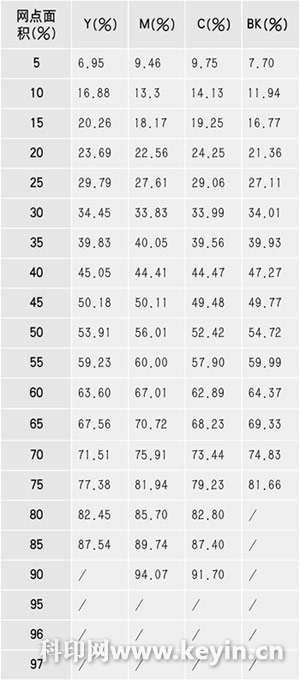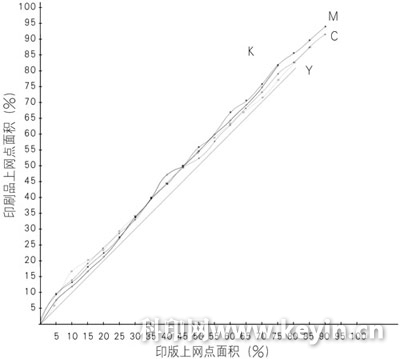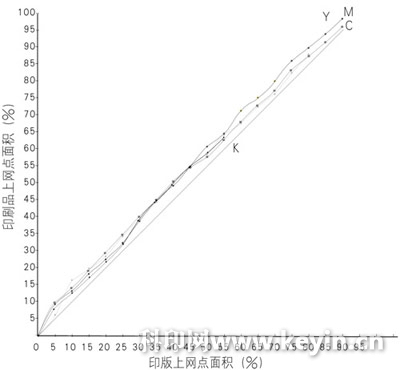Effect of waterless offset ink on dot gain
Waterless offset printing refers to an offset printing method that does not require a conventional aqueous solution dampening, using an ink-repellent silicone rubber layer as a non-image portion of a printing plate, and using a special ink to complete printing .
Waterless offset printing has higher quality due to the elimination of dampening solution. Such a promising printing method, the related material requirements are relatively high, and ink as an important material basis for printing plays a very important role in this printing process.
At present, the internationally common waterless offset printing ink is K+E in Germany, and the key parameter for evaluating the quality of ink is to analyze the common parameters of conventional printing in the dynamic printing process. Because the increased dot size of the print directly affects the quality of the print. In this paper, the German KE waterless offset ink is taken as an example to analyze the influence of ink on the dot gain during the waterless offset printing process, so that the printing suitability parameters of the ink can be obtained.
Test introduction
experiment material
The test strip printed by Heidelberg QKDI-46 waterless printing machine, the test strip printed by Heidelberg GTO four-color water offset printing machine.
Test Instruments
X-Rite 508 Density Meter.
Test conditions <br> A coated paper with a basis weight of 157 g/m2 and a screen with a number of screen lines of 175 lines/inch were used for printing under standard printing conditions (ie, temperature of 20 ° C and relative humidity of 56%). Test strip. Under the standard test conditions (ie, the temperature is 20 ° C, the relative humidity is 65%), 6 samples were randomly selected from 500 proofs, and the average value was taken as shown in Table 1 and Table 2.
The data for analyzing the increase of the four-color dots is shown in Table 1. The data in Table 1 is the overall increase in the dot size of the coated paper having a basis weight of 157 g/m2.
Table 1 157g/m2 coated paper dot reduction 
The data for analyzing the increase of four-color dots are shown in Table 2.
Table 2 200g/m2 coated paper dot reduction 
data analysis
It can be analyzed from Table 1 that the highest dot area percentage of 157 g/m2 coated paper for Y, M, C, BK four-color inks is 85%, 95%, 96%, and 75%, respectively. For the smallest dot reproduction, it is 2%, 1%, 1%, and 1%. The dot reduction situation is shown in Figure 1.

Figure 1 157g/m2 coated paper dot reduction
In the 40% to 50% area, the dot gain is the largest. It can be seen from the figure that the waterless offset printing dot is increased by about 7% to 8%. Water offset printing is generally 20% to 25%.
It can be analyzed from Table 2 that the highest dot area percentage of the 200 g/m2 coated paper capable of replicating Y, M, C, and BK four-color inks is 85%, 95%, and 96%. The area of ​​the smallest dot that can be copied is Y2%, M1%, C1%/BK1%. As shown in Fig. 2, the dot gain is relatively small, and the largest dot gain is concentrated in the region of about 50%, which is about 7% to 8%.

Figure 2 200g/m2 coated paper dot reduction
Test Conclusions
It can be seen from Fig. 1 and Fig. 2 that the increase of the waterless offset dot is not serious, and the influence of the fountain solution on the dot gain is eliminated. In the highlight area, the dot gain is small, and in the midtone zone (ie, in the 45% to 55% region), the dot gain is the largest, and the largest dot gain region is between 7% and 8%.
Glass Food Container Set,Meal Prep Container,Kids Bento Lunch Box With Bag,Silicone Base Glass Food Container
Guangdong DK Houseware Co., Limited , https://www.dkhouseware.com